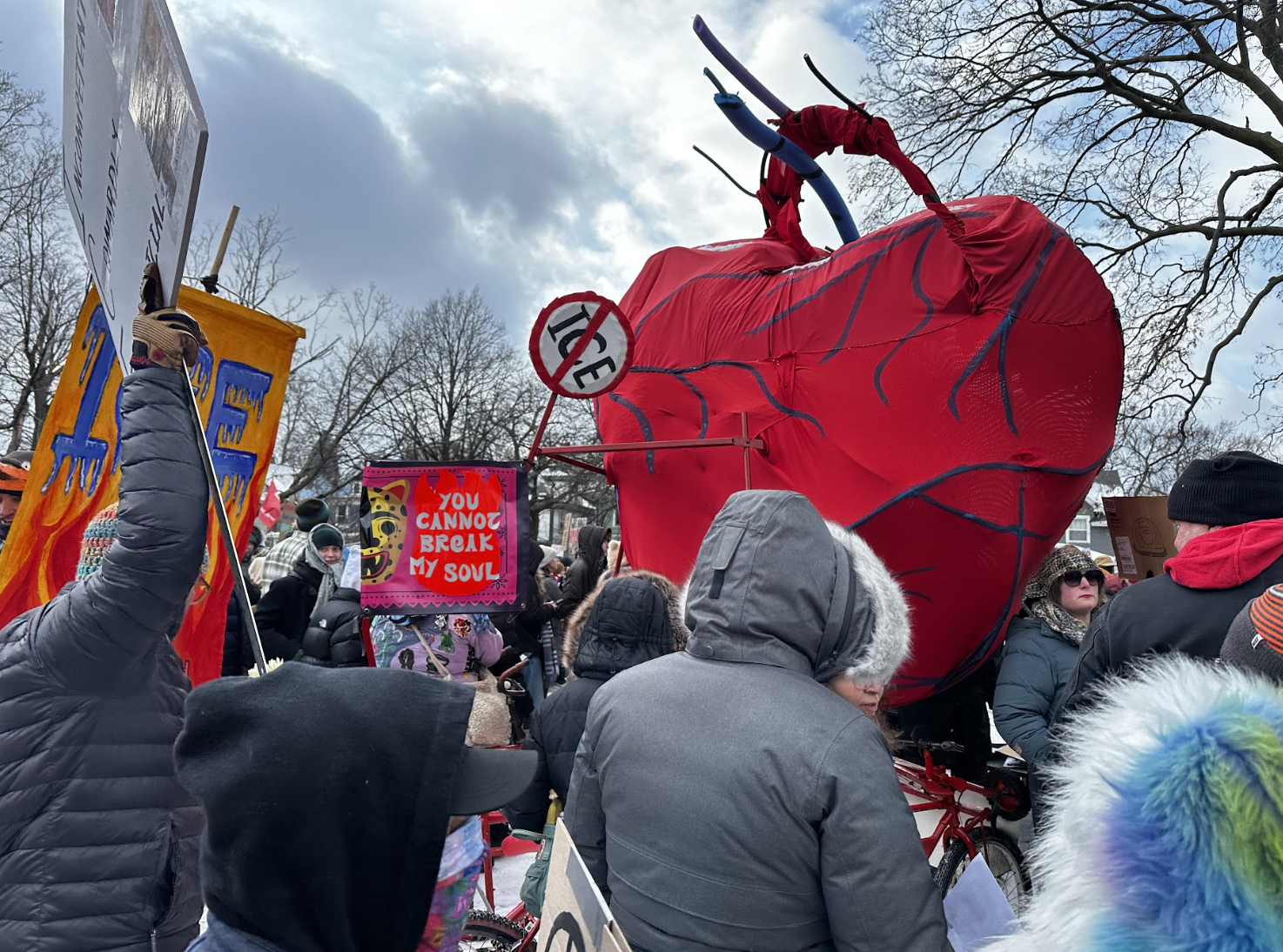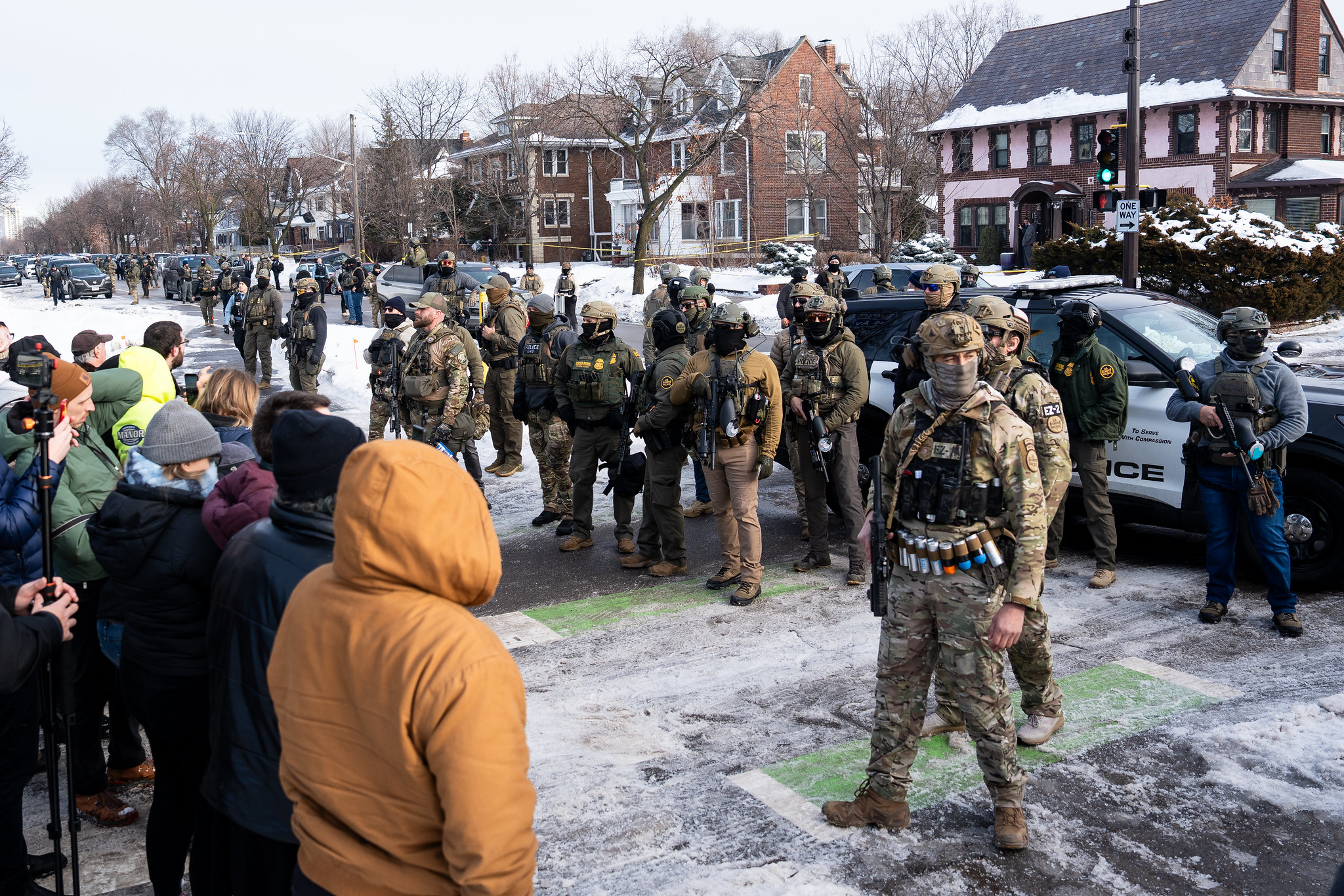Precariously shuffling down an icy hill to Bohemian Flats to question a murder suspect because the horse couldn’t handle the slope. Eating dinner at a seedy saloon in the Gateway District. Taking a horse 'n' buggy ride out to the “rural” outskirts of south Minneapolis to talk to Scandinavian labor organizers and— because certain truths are eternal—noting as he turned from Cedar Avenue onto 42nd Street that the “quality of the road decreased considerably.”
Plenty of novels take place in Minneapolis. But amateur-historian-turned-novelist Erik Rivenes’s 2014 book, Big Mitt, is perhaps the only of them that you would categorize as historical fiction—as in, a novel that is concerned with the usual aims of plot, character, and insight, but puts a particular premium on evoking a specific historical time and place.
In it, Rivenes’s hard-boiled detective protagonist takes the reader through an intricately rendered, turn-of-the-century Minneapolis during its transformation from a promising frontier town to a bustling metropolis. It is rich with specific, colorful descriptions of real places, people, and events of the time: the gleaming buildings, budding civic sphere, and the booming economy alongside the corruption, sex slavery, violence against Native people, and growing gap between rich and poor brought about by the Industrial Revolution.
Much of this Rivenes later covered in his nonfiction account of the same world, 2018's Dirty Doc Ames and the Scandal that Shook Minneapolis. Read back-to-back, what stands out is not just how historically accurate the novel is, but also the way fiction can bring a historical moment to life in ways that even well-executed nonfiction cannot. While there is a decent corpus of nonfiction books, documentaries, and photos of Minneapolis history, ultimately the limits of the form make them better at telling you what happened than how it felt to live through it.
“I wanted to create a story with a beginning, middle, and end, that had some interesting characters and some suspense. But more important than anything to me was: Was it being historically accurate?” Rivenes tells Racket. “I wanted to create a historical atmosphere that readers could envelope themselves in, one that gives them a chance to encounter real-life period figures occasionally fictionalized for dramatic effect."
Rivenes’s interest in local history stretches back to a summer college job at Fort Snelling. In the '90s, he capitalized on a resurgence of interest in St. Paul’s gangster history and built a business giving costumed tours featuring the city’s most notorious gangster hangouts and crimes. As he was developing a companion crime tour in Minneapolis, he learned the story of Mayor “Dirty” Doc Ames and perhaps the greatest political scandal in state history.
Quick-ish overview, if you’re curious: Ames came to Minneapolis as a child of one of Minneapolis’s first settler families, and became a popular local figure due to serving as a physician in the Civil War and providing medical services to veterans and the destitute. He was elected to the state Legislature, and was instrumental in the creation of the Minnesota Veterans' Home. He won four non-consecutive terms as the mayor of Minneapolis, including an unlikely fourth term he finagled by switching parties to exploit a new primary election system.
Ames approached his final term as a last-hurrah cash grab for him and his inner circle. He fired much of the police force and replaced them with his friends and cronies, including his brother as police chief. He shook down brothel owners and set up a ring of gambling dens. Perhaps most daringly, he initiated the novel’s titular "Big Mitt" scam, which involved luring naïve out-of-towners fresh off the train into a rigged card game and then using the police to hurry them out of town before they could seek redress.
It was this game that ultimately led to his downfall, when a hoodwinked victim of the scam went to the local press. An exposé in the influential muckraking magazine McClure’s, titled "The Shame of Minneapolis," turned the story into a national fascination. In a series of high-profile trials, many of Doc’s deputies were sentenced to time in Stillwater prison. Doc himself went on the lam and was eventually retrieved, tried multiple times, found guilty, released after a successful appeal and mistrial, and died a few years later.
Captivated by the story, Rivenes began laying the groundwork for the novel by immersing himself in the world of Gilded Age and Progressive-era Minneapolis. For him, that included amassing photos, listening to a looping playlist of music from the period, and studying a compendium of the day’s slang. Most of all, it meant long days in the Minnesota Historical Society archives, reading daily newspapers cover-to-cover, day after day.
“It might sound boring, but for me there’s nothing more entertaining in the world than going through one year of a newspaper from beginning to end, seeing how some stories thrive and others die, and just seeing what people are interested in,” Rivenes says. “And not just reading what pertains to what I’m writing about—also looking at the advertisements and editorials and special interest stories. There’s no better way to pull yourself into another time period than just perusing old newspapers.”
It’s quite an effort to write a full-length novel for an audience that could be generously described as niche. As a member of that small constituency, my reaction was mostly gratitude: Even if pulpy detective novels aren’t really my thing, I felt like someone had gifted me a time machine to a relatively obscure locale I happened to be dying to visit.
Rivenes clearly found the project worthwhile enough to write a sequel set in St. Paul. He’s also turned his fascination with crime and history into a popular podcast that is now his full-time job, Most Notorious!, featuring interviews with true crime writers about momentous criminal events. There's also a local spinoff, Minnesota’s Most Notorious.
After spending decades chasing stories of lawlessness around the country and in the Twin Cities in particular, Rivenes says he’s still just as excited about unearthing new stories and adding definition to his mental picture of the Twin Cities of yore. Especially, in Minneapolis’s case, since so much of the set and setting of the city’s original activity has been lost.
“What’s most disappointing to me is that it’s almost impossible to visually imagine Minneapolis of 1901 from 2023. They’re so vastly different,” the author and podcaster observes. “There are cities where you go and a lot of their buildings from 100-plus years ago are still there. Even in a small town in Minnesota, you can often see what the downtown area looked like 120 years ago. But unfortunately, those are mostly gone in Minneapolis. So a healthy dose of imagination really helps."







